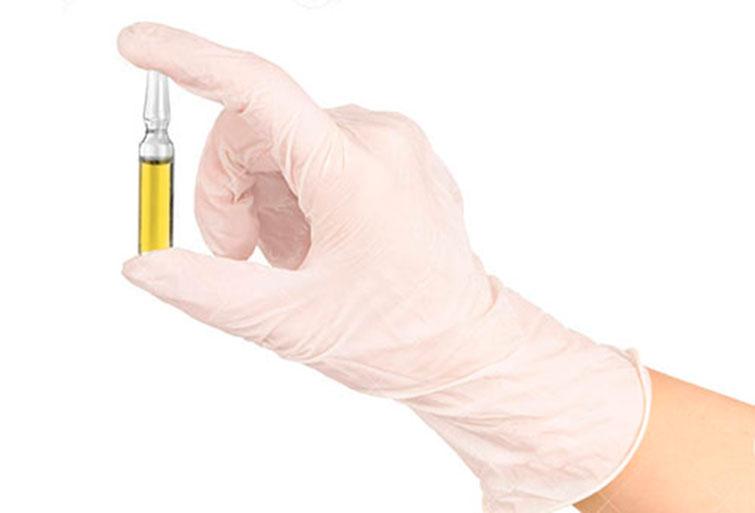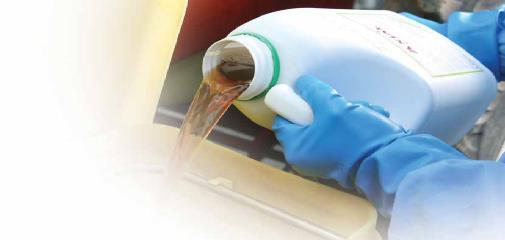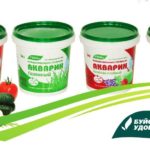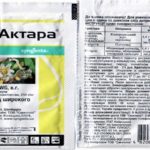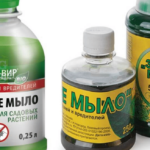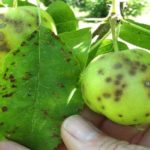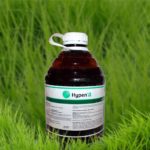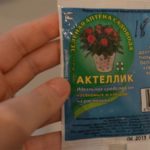When growing crops, pesticides are rarely used. Insecticides are intended to destroy a complex of pests. Let's consider the composition of Citkor, release form, mechanism of action and purpose, dosage and consumption. Is it compatible with agricultural products, rules and shelf life, what suitable substitutes are available.
Composition and release form of the drug "Cytcor"
The active substance of “Cytkora” is cypermethrin in the amount of 250 g per 1 liter.The insecticide is produced in the form of an emulsion concentrate in bottles of 1, 5, 10 and 20 ml (for personal use) and in 5 liter canisters (for agriculture). “Cytkor” is a contact-intestinal insecticide that also has a repellent effect.
Purpose and mechanism of action of the drug
Cypermethrin from the drug "Cytcor" has an initially stimulating effect on the central nervous system of pests, then paralysis occurs. The insects die.
“Cytkor” is used on corn, wheat, beets, potatoes, soybeans, cabbage, cucumbers, tomatoes, apple trees, grapes, carrots, on pastures and areas infested with locusts. The drug fights cutworms, moths, aphids, bedbugs, leeches, flea beetles, thrips, beetles, moths, moths, leaf beetles, whiteflies, whiteflies, flies and psyllids. In everyday life it is used to treat premises against harmful insects.
Consumption rate and use of insecticide
Dosage, according to instructions (in l per ha), for various crops and consumption (in l per ha):
- corn – 0.15-0.32 (400-500);
- wheat – 0.2 (500);
- beets – 0.4 (200-400);
- potatoes – 0.1-0.16 (400-500);
- soybean – 0.32 (400-500);
- cabbage – 0.16 (400-500);
- tomatoes and cucumbers from whitefly – 1.2-1.6 (4000-5000);
- from aphids and thrips – 0.64-0.80 (4000-5000);
- apple tree – 0.16-0.32 (1000-2000);
- grapes – 0.26-0.38 (800-1200);
- carrots – 0.5 (400);
- pastures – 0.2-0.3 (200-400).
The number of treatments with Tsitkor per season is different: pastures are treated 1 time, cabbage, apple trees and grapes - 3 times, other crops - 2 times. Waiting period before harvesting fruits or vegetables: for tomatoes and cucumbers - 3 days, for grapes, apple trees and cabbage - 25 days, for other crops - 20 days. "Cytcor" can be used in private household plots at a concentration of 1.5 ml per 10 liters of water.
The procedure for preparing the solution: fill the tank one third with water, pour in the required amount of concentrate, stir. Then add the remaining water to the tank and stir again.
Precautionary measures
"Cytcor" belongs to drugs with toxicity class 3, which means slightly toxic drugs. The solution must be prepared immediately before use and used in full on the day of preparation. To work with the product, you need to wear protective clothing, a respirator, gloves and goggles. They are needed to protect hands, eyes and respiratory organs from the drug solution.
They cannot be removed during operation. After finishing work, you need to wash your hands and face, wash your clothes and rinse the sprayer.
If the insecticide gets on your skin or eyes, rinse them with plenty of water. Cypermethrin may irritate the skin and mucous membranes. If the solution somehow gets into the stomach, you need to rinse it: drink 1 liter of water and 6-7 tablets of medicinal charcoal. If the condition worsens, you should immediately consult a doctor.
Compatibility with other pesticides
"Cytcor" can be combined with pesticides; restrictions apply to products with an alkaline reaction. If the interaction of substances is not known, you must first conduct a small test: mix 50 ml of drugs dissolved in water and, if they do not react with each other, the total solution is stable in temperature, color, consistency, and does not precipitate, then the products can be mixed.
Storage rules
"Cytcor" can be stored at room temperatures from -15 °C to +25 °C. Other conditions: no direct sunlight, high humidity.
Other agricultural products and fertilizers can be stored in the warehouse next to the insecticide; food, animal feed, medical and household products cannot be stored. Restrict access to products to children and animals to avoid possible poisoning.
Are there any analogues?
When used in agriculture, you can replace “Tsitkor” with the following products: “Arrivo”, “Superkill”, “Tsipi”, “Shaman”, “Patriy”, “Cyclone”, “Nurimet Extra”, “Tsiperon”, “Tzipi Plus", "Nurbel", "Fitozan", "Shar Pei", "Vega", "Citox", "Volley", "Tsiperus", "Cirax", "Rangoli-Noril".
On private farms, it can be replaced with insecticides: “Alatar”, “Shar Pei”, “Inta-Ts-M”, “Karbotsin”, “Iskra”, “Molniya Extra” and “Inta-Vir”. They also contain cypermethrin, a member of the pyrethroid class.
"Citkor" insecticide protects a variety of crops (fruits, grapes, vegetables, grains and others) from common known pests. The product is easy to use, effective and reliable. It has a fast and long-lasting effect. Can be combined in tank mixtures, and with many drugs. Economical, has low dosage and consumption per hectare. The substance quickly decomposes, does not accumulate in plant tissues, soil, groundwater, and does not harm crops. Protects plants from harmful insects for at least 2 or 3 weeks.
To achieve the required effect and completely destroy the entire pest population, it is necessary to carry out 2 or 3 treatments after a certain time. One of the advantages of Tsitkor is that it can be used both on an agricultural scale and on small areas of private plots.To do this, the manufacturer produces the drug in containers of the appropriate volume.

